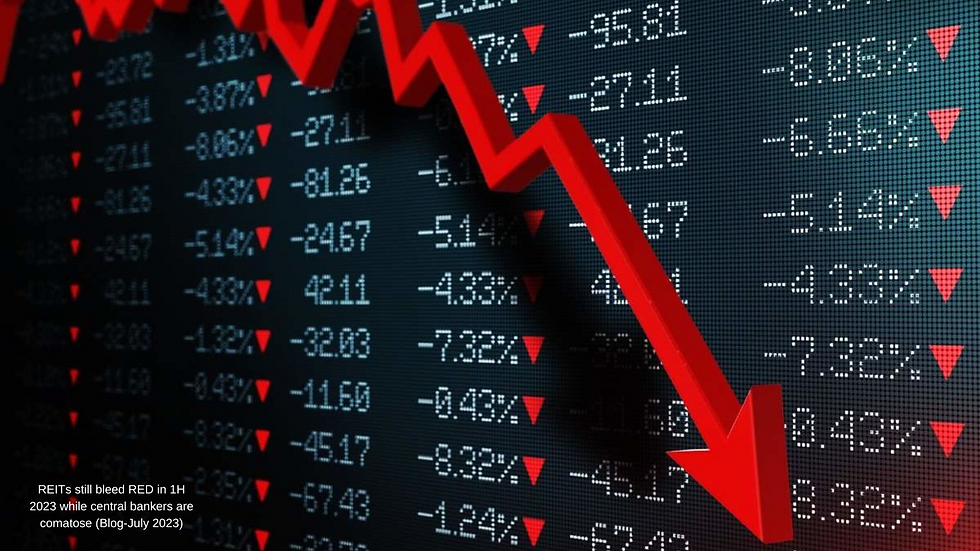VOLATILITY IS BACK – MAKE IT PROFITABLE
- by Gabriel Yap

- Nov 18, 2017
- 4 min read
09/2015-
Looking at any major newspapers these last few weeks would have gotten you into a state of pessimism, moodiness and even despair if you believe the prognosticators’ predictions of doomsday scenarios for global equities and our local stock markets.

Records falls in Asian currencies, volatilities in stock markets and new lows in commodities have certainly made many wonder if indeed there is something really wrong with the global economies or if their investment strategies are intact with their long-term goals.
The most popular question that I have been asked has been – “What’s wrong with the markets? Why are they falling so suddenly? And why are they falling so fast?”
Global markets react to all sorts of news and data. Thus, if there is a specific issue to pinpoint, it would be China’s devaluation of the yuan against the US$ on Aug 10th.
China announced that it will change the way it calculates the daily value of the yuan against the greenback by allowing the yuan’s exchange rate to be driven by market forces and thereby strengthens the case for the yuan to be a global currency.
In actual fact, by end-August, the yuan has only been devaluated by 2.8% to the US$, but the markets’ reaction was one of nervousness, causing madness in certain areas. These causative madness in turn feeds on itself.
What PBOC did on Aug 10th and the next 2 days is another classic case of poor handling of financial markets by central banks. It devalued, then try to assure financial markets the following day via a press conference when it saw turmoil in the financial markets. Surely, they would have understood that their action caused nervousness and time and tide waits for no man!
Then in the following week on Aug 20th, this nervousness turned into madness when Kazakhstan also devalued its currency – the tenge by abandoning a peg to the US$ and allowing market forces to set the price. Immediately, the tenge collapsed 27% against the US$. The Kazakh economy is heavily dependent on oil, which has fallen 30% to new lows in the past few weeks. A deeper fear griped investors that it could be the start of competitive devaluations amongst export countries trying to shove up their flagging economies.
Shanghai stocks got smashed by 4% while Hong Kong’s Hang Seng Index slipped 5% on Friday 21st Aug, leading the decline in Asia. That same day, the local FTSTI sank below 3,000,last seen in Feb 2014.
If there is one thing we have learned from the Global Financial Crisis of 2008, it is that markets’ madness and nervousness feed on themselves.
Europe and US markets followed suit with matching plummeting plunges of 5-6% for the week ended-21st August.
As Central Banks sat and waited over the weekend, causative madness takes on a new dimension as markets re-opened on the week of 24th August, leading to another “Black Monday”.
Not surprisingly, Shanghai led the causative madness as stocks tanked 8.5% on Monday 24th August while most Asian indexes plummeted to new lows not seen since 2012. The local FTSTI hit a low of 2,843, a whopping 617 point drop or 17.83% decline since 20th May 2015 when the FTSTI started to be battered by a potent mix of Greece debt problems, pending lift-off of interest rates by the Federal Reserve and “Black Monday 24th Aug”.
Wary Europe woke up and sold off by more than 5% setting the stage for the mother of madness – the US market opened with the Dow Jones almost a 1,100 points down and the S&P down almost 120 points within minutes of the opening bell (bringing back memories of the GFC when the Dow closed 777 points down on 15th Sep 2008).
However, in as much time as the markets traced out a “Black Monday” on 24th August, it quickly tracked back in the sharpest recovery in the next 4 days. By the end of the week-ended 28th August, the Shanghai Composite had closed at 3,232 while the Dow and S&P had closed above the previous Friday’s while most Asian markets have also retraced back the bulk of their losses. The local FTSTI, for instance, closed at 2,955.
It is almost as if “Black Monday” 24th August never existed.
To me, markets are just getting back to being markets. Ever since the GFC, global markets have returned to unusual calm, to the point of boredom since 2010. For instance, we have had 9 (prior to “Black Monday”) market corrections in the current decade for the local FTSTI, but the average falls were only 329 points or 10.29%.
The sharpest correction before this “Black Monday” was caused by the Euro and US Debt Crisis which ran from 1st August 2011 to 5th October 2011. It caused the FTSTI to sell-off from 3,215 to 2,522 - a whopping 693 points drop or 21.55% decline.
The nature of markets are that they are volatile. It is like engaging wolves on a hunting trip.
Go do Bikram Yoga if you seek calmness. “Black Monday” 24th August 2015 is just the beginning of volatility that precedes financial markets before the Federal Reserve lift-off of its 1st interest rate hikes. It does not matter if that will happen in September, October or December.
Get used to volatility and you will enjoy the thrills and most importantly, profit from it.




Comments